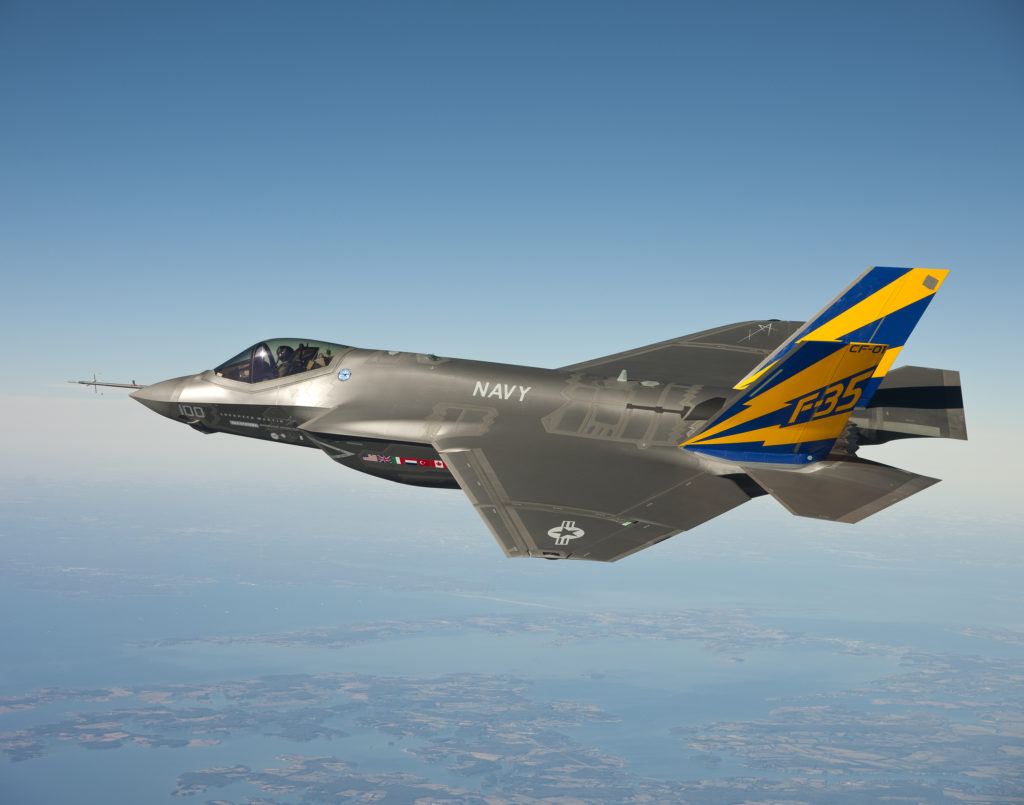There’s a story, you may have heard, about NASA spending millions of dollars to create a pen that could write without gravity in space. By contrast, the Russian Space Program simply gave their cosmonauts pencils in order to accomplish the same job. Although the story is a myth, it does highlight America’s ability to spend an unnecessary amount of money on technology to accomplish certain missions.
Don’t believe me? Recently, Army Chief of Staff General Mark Milley complained about the Modular Handgun Systems program wasting $17 million in two years just to field a new handgun to replace the M9 Beretta. This is not the only program the military has thrown millions, or even billions of dollars at. The United States Air Force (USAF) has been pushing for years to produce a fleet of the highly advanced F-35 Lightening II stealth fighter jets to replace the extremely successful A-10 Thunderbolt II, most commonly known as the “Warthog.” What the Air Force intends to do is phase out the currently existing fleet of 3rd and 4th generation aircraft with this new 5th generation F-35 Lightening II and its several variants. This includes phasing out the A-10. However, I believe that it is a mistake for the USAF to replace the A-10 with the F-35.
First, we need to understand the capabilities of the A-10. Despite its ungainly appearance, some reporting indicates the Warthog is a powerhouse piece of equipment and extremely favored by U.S. ground units in today’s conflicts in Iraq and Afghanistan as an air-to-surface asset, its primary function. The Warthog has had a highly successful combat record, although U.S. Air Force Generals allegedly have been trying to prevent A-10 pilots from releasing their combat records in order to promote the F-35. It also is more durable and survivable against enemy fire because most of the aircraft is made of titanium armor. This armor was introduced because the A-10 is a slow moving aircraft and needed thick armor against Anti-Aircraft (AA) Fires, or possibly even enemy aircraft. There are reports of Warthogs being shot to pieces by AA and still able to fly back to base in one piece (one report noted an entire wing was blown off).
On top of this, the Warthog can carry a very impressive arsenal of weapons thanks to its larger wingspan, which is larger than the F-35. A wider variation of weaponry gives more flexibility to engage specific ground targets. Thanks to its ability to move slow and its thick titanium armor body, the A-10 is superior in Close Air Support (CAS) missions, the most common missions seen in today’s current wars in Iraq and Afghanistan.
The F-35 was created in order to tackle multiple missions to include: electronic attack, air-to-surface, air-to-air, and intelligence, surveillance and reconnaissance (ISR) missions. This way, the F-35 could “accomplish” all the missions of the current fleet. In addition to these missions, the F-35 was created with advanced stealth, interoperability, and a full mission systems coverage. All of these are wonderful things, no doubt, but at what costs? This makes the F-35 a Jack of all Trades, yet Master of None. In other words, the F-35 will be competent in all of its missions, but may never be outstanding in any of them. This could pose a problem for dealing with more advanced threats in the future.
Next, we must understand the major problems of the F-35 compared to the A-10. The first problem is the physical costs. A generic F-35 costs around $178 million, with the most expensive being $337 million. Today’s Warthog: $18.8 million. The US has already spent over $400 billion on the aircraft program, with a projected estimate of $1.45 trillion, which some experts say is enough to provide tuition-free education for every student in the US until the year 2039. The next problem is the design. The F-35 will have new technology and electronics that will be connected all throughout the aircraft due to its smaller frame. Even though the F-35 will be faster, minimal damage received in Close Air Support (CAS) missions could render the aircraft inoperable for further use. However, the F-35 won’t be able to go as slow as the A-10, making CAS missions more dangerous for the troops on the ground. As mentioned previously, the A-10 has a titanium armor center and belly, where most of its electronics and equipment are located, protecting it from the inevitable ground fire.
In addition to its armor, the A-10’s twin engine aids in CAS missions because if one goes down, the other engine has enough power to fly the aircraft back to base. Another problem is that the USAF can’t even keep the F-35 out of the repair shop, possibly the Air Force’s biggest problem and a logistical nightmare. There are reports of 25mm cannon malfunctioning and multiple engine malfunctions as well, which one such engine malfunction actually grounded the entire F-35 fleet in the summer of 2014. While it is expected to be problems during development of this aircraft, don’t forget that we’ve already spent over $400 billion on this aircraft over several years and yet are still no closer to fully implementing them in the fleet. Also, it only makes logical sense that repairs on the more advance F-35 will be more costly than repairs done on the A-10, adding to the already massive spending for this aircraft.
You would think with the amount of time, money, and advanced technology put into this aircraft that the F-35 would be the most superior aircraft in the world. While the projected capabilities of the F-35 will (hopefully) be superior in the future, there’s reports that the Russian PAK-FA, AKA the T-50, will outperform the F-35 in air-to-air battles. If Russia possess the power to outperform our best aircraft in air-to-air battle, then we would be unable to conduct air-to-surface missions, let alone CAS. If we do not have the best air-to-air capabilities over our largest threats like Russia or China, then we wouldn’t be able to carry out air-to-surface missions because our enemy would have air supremacy! We wouldn’t be able to fly our F-35s, let alone our A-10s if this was the case.
In short, the USAF should not phase out the A-10 with the F-35. The F-35 should have been designed solely for stealth and air-to-air missions so that we can maintain air superiority in any potential battles or wars with our projected enemies. With air superiority, the A-10 can then come in and do air-to-surface missions in air controlled areas. Today, many of our battles take place in extreme close quarters, and with the continued rise of cities and mega-cities this type of close quarters combat doesn’t appear to going away any time soon. Unfortunately, the F-35 program has already spent so much money that it would be worse to scrap the program entirely. Instead, the USAF should try to re-prioritize the F-35’s mission to be air-to-air and try to scrap the F-35’s air-to-surface, mainly CAS, missions. If the USAF is capable of doing this, then I propose that the USAF phase out other aircraft such as the F-18, F-16, and Harriers, and maintain/further advance the A-10. The USAF fleet should be part F-35 and part A-10, not all F-35 as the USAF currently wants. With the F-35’s primary mission is air-to-air, the U.S. can maintain air superiority against projected threats for future conflict. With air superiority, the U.S. can perform CAS or air-to-surface with the A-10. In turn we have air superiority against enemy fighter jets as well as superiority in CAS and air-to-surface missions. Unless the operating environment calls for better CAS or air-to-surface capable aircraft or if the defense budget increases, then the USAF can create a new program to create a modern aircraft that can perform the same missions as the A-10, only better, and then can it phase out this battle-hardened aircraft.



